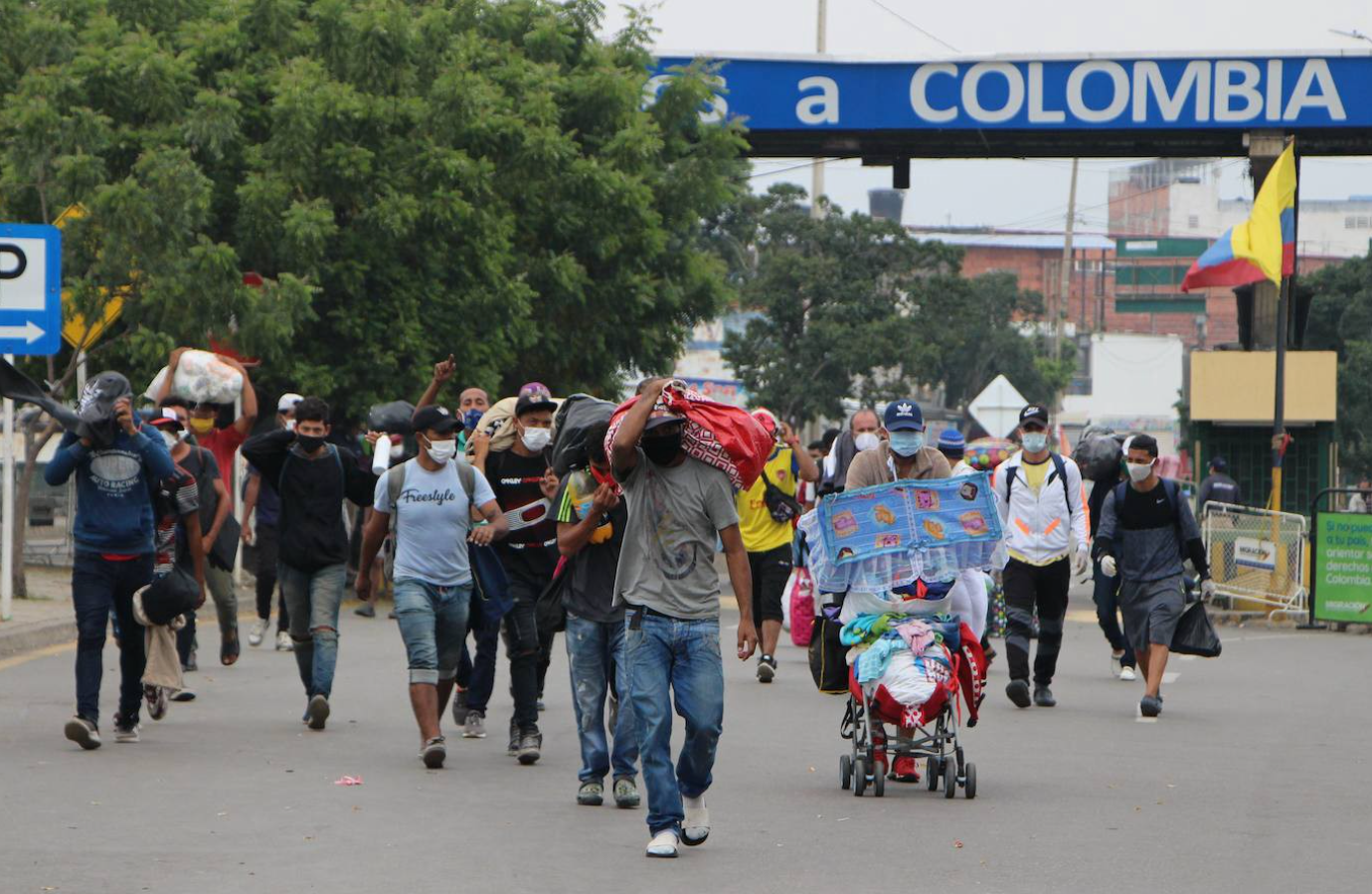Coauthor Stephanie Lopez
The government of Gustavo Petro has been in power for more than a year, and, it must be said unequivocally, that its leadership on migration issues has been a continuous lethargy, scarcely disturbed by some disconcerting trills. Considering this absence of management by the Colombian national authorities, the issue of so-called transit migration is of particular concern. The ostracism in which the country’s migration policy has been left is not only regrettable but also has the worst impact on migrants and refugees crossing or residing in Colombian territory. In this sense, it is necessary to have a public agenda in which the migratory line has, once again, the relevant place that the context imposes.
Firstly, as some voices have already warned, it is regrettable that access to data on the performance of Venezuelan migration in Colombia is so scarce today, almost nonexistent. On the one hand, Migration Colombia stopped publishing periodic infographics that allowed us to know the number of Venezuelan people in the country, how many of them were women and men, and the age ranges and their territorial distribution. For a long time, we had a backlog of this information, since the last infographic published was the one that presented data on Venezuelan migration up to February 2022.
Only a few days ago a new report was published with information from October 22, which indicates that there are about 2.9 million Venezuelans in Colombia. In addition, although the registration for the Temporary Protection Statute for Venezuelan Migrants (ETPV) has socioeconomic characterization data based on a questionnaire of more than 80 questions, these data are not open. Not only has official data on Venezuelan migration ceased to be produced and published, but it has also become very difficult to access the official Migration Colombia infographics produced by previous governments. Even the links to search for such data no longer work and the icon on the Migration Colombia web page that allowed access to this information in one place has disappeared.
The opacity of the data is also an issue that is replicated in the other migration, which, supposedly, has no vocation of permanence, of which little or nothing has been made known by the national government. We have learned about the dynamics of migration through the Darien Gap exclusively by international agencies, the Panamanian government, or Colombian control authorities.
This transit migration is no longer only that which crosses through the Darien Gap. According to the most recent report of the Colombian Attorney General’s Office, it is also leaving from the Colombian island of San Andrés to Nicaragua. This migration, historically invisible, takes place in extremely vulnerable conditions, and their human rights are systematically violated. While Panama offers data on the population arriving in the country from Colombia through the Darien, Colombia has no similar action, unfortunately. In any case, according to the IOM report on migration in the Americas, we know that “as of June 2023 the land border between Panama and Colombia has registered an inter-annual increase of 90 percent, with 196,371 irregular entries” (p. 1). According to this report, “Venezuelans are the first irregular migrant nationality in transit in all countries except the United States, where they are second” (p. 15).
Additionally, recently the U.S. government made two important, but contradictory, announcements regarding migration from Venezuela. This is precisely due to the increase in these flows into the country and because of political pressure from cities such as New York, which have been overwhelmed in the context of a presidential campaign. The first is the extension of the Temporary Protection Permit (TPS) for the Venezuelan population for 18 months. The second, contrary to the first, is the deportation of Venezuelans to their country when they try to cross the U.S. border irregularly. This policy of externalization of borders, which extends to Colombia, has direct consequences on the population in transit.
After these measures became known, President Gustavo Petro announced on Twitter the need for humanitarian corridors for the “return of Venezuelans”. However, it must be said clearly and without euphemisms, (i) deportations are not repatriations; (ii) the return must always be voluntary, and (iii) deportations, by definition, are not voluntary. In any case, these deportations increasingly call into question the government’s will to have “safe, orderly and regular” migration, as stated in the UN Migration Pact, while migrants in transit continue to put their lives at risk trying to reach the United States. Furthermore, it is implicitly recognized that the conditions in Venezuela are ideal for this return, violating the principle of non-refoulement.
The diversity of the flows and their migratory routes, in some cases with a vocation of permanence, in others of transit, invites us, inescapably, to address human mobility in a comprehensive manner and with a human rights approach. In this approach, the protection of the person and their safety are the center of state action. In this regard, we call on the Colombian government to design and implement positive measures. The recent announcement of the opening of “preliminary inquiries” to some officials of the Foreign Affairs sector (Foreign Ministry and Migration Colombia), made by the Attorney General’s Office, “for the alleged omission of the extensive implementation of the Comprehensive Migration Policy (PIM) regarding the population that crosses the Darien Gap”, only ratifies the inaction we have described here.
*Stephanie López is a postdoctoral researcher at The Local Engagement Refugee Research Network (LERRN), Carleton University, Ottawa, Canada.
Translated by Janaína Ruviaro da Silva from the original in Spanish.












